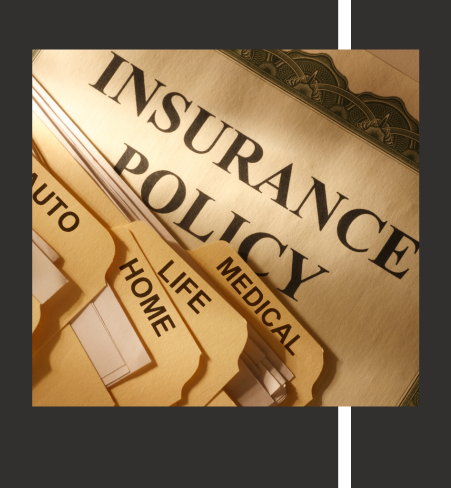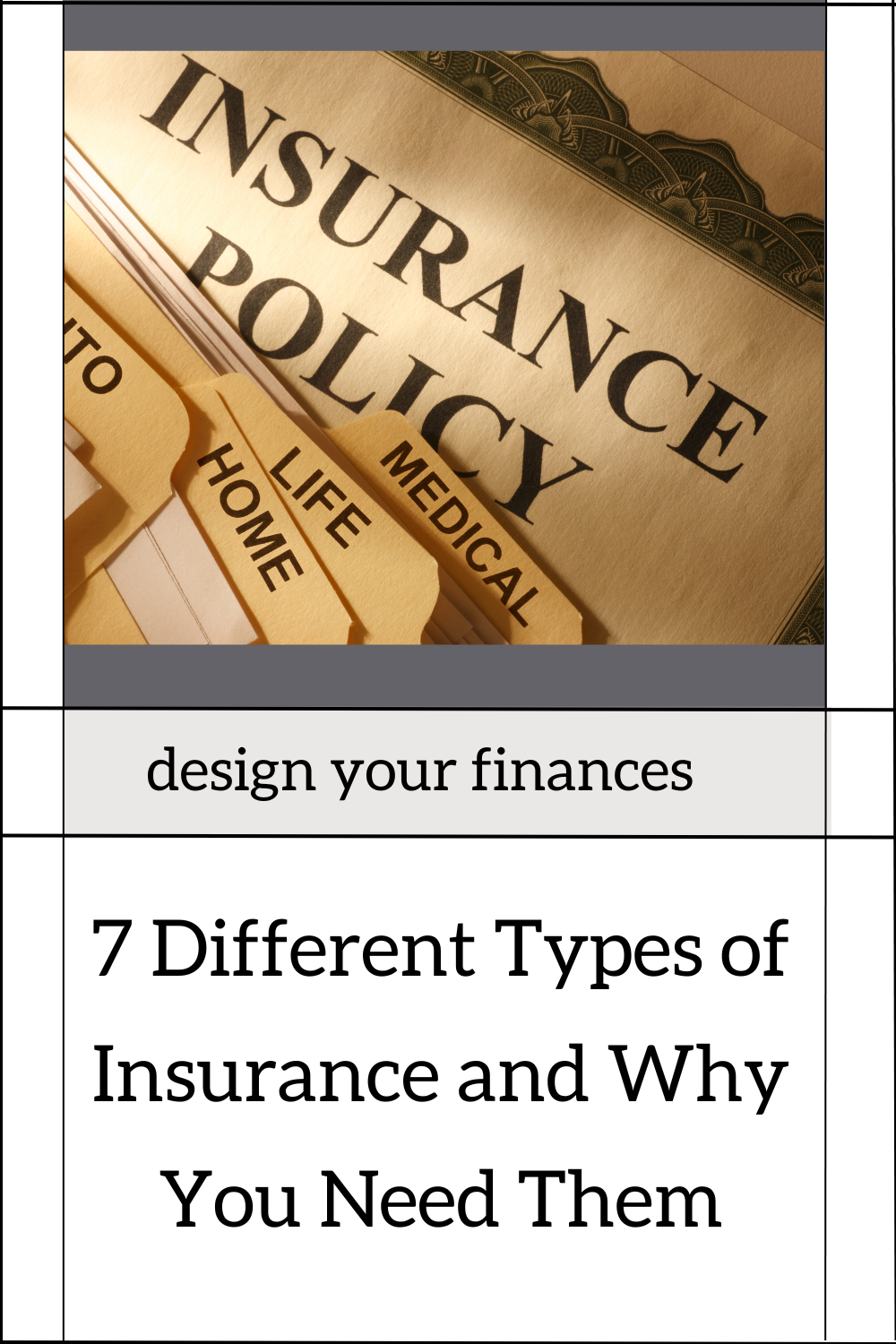
7 Different Types of Insurance and Why You Need Them
 There are Different Types of Insurance which serves as a crucial financial safety net, providing protection and peace of mind in the face of unexpected events.
There are Different Types of Insurance which serves as a crucial financial safety net, providing protection and peace of mind in the face of unexpected events.
Understanding the various types of insurance and their importance is essential for safeguarding yourself, your loved ones, and your assets.
Insurance plays a crucial role in protecting individuals, businesses, and their assets from various risks and uncertainties. From safeguarding your health to protecting your property, there are numerous types of insurance available to mitigate potential financial losses.
In this guide, we will delve into some of the most common types of insurance, exploring their purpose, benefits, and considerations. Whether you are looking to protect your health, home, vehicle, or other valuable assets, gaining knowledge about the various types of insurance will empower you to make informed choices and effectively manage potential risks. In this blog post, we will explore different types of insurance and explain why having adequate coverage is a wise decision.
.
1. Health Insurance
Health insurance is vital for managing medical expenses and ensuring access to quality healthcare. It covers a portion of medical costs, including doctor visits, hospitalization, medications, and preventive services. Health insurance protects you from financial burdens associated with medical emergencies and allows you to receive necessary medical care without worrying about exorbitant bills.
- Managing Healthcare Expenses: Health insurance typically involves some level of cost-sharing, such as deductibles, copayments, and coinsurance. Understand your financial responsibilities and budget accordingly. Consider setting up a health savings account (HSA) or a flexible spending account (FSA) if available, as these can help you save money specifically for healthcare expenses on a tax-advantaged basis
.
2. Auto Insurance
Auto insurance is a legal requirement in most places and provides financial protection in case of accidents, theft, or damage to your vehicle. It typically covers liability (injury or property damage to others), collision (damage to your car), and comprehensive (non-collision-related damage) aspects. Auto insurance not only protects your investment in your vehicle but also safeguards you from potential liability claims.
- Coverage Options: Auto insurance typically offers different types of coverage, including liability coverage, collision coverage, comprehensive coverage, uninsured/underinsured motorist coverage, and medical payments coverage.
- Liability coverage is usually required by law and covers damages you cause to other people or property in an accident. Collision coverage helps cover the costs of repairing or replacing your vehicle in the event of a collision.
- Comprehensive coverage protects against non-collision-related damages, such as theft, vandalism, or natural disasters. Uninsured/underinsured motorist coverage provides protection if you’re involved in an accident with a driver who doesn’t have sufficient insurance. Medical payments coverage helps pay for medical expenses resulting from an accident.
.
3. Homeowner’s or Renter’s Insurance
Homeowner’s insurance is essential if you own a home, while renter’s insurance is crucial for those living in rented properties. These types of insurance protect your dwelling or personal belongings against damage or loss due to events like fire, theft, vandalism, or natural disasters. Additionally, they provide liability coverage in case someone is injured on your property. Homeowner’s or renter’s insurance safeguards your home or belongings, allowing you to recover financially from unforeseen incidents.
- Coverage for Property: Homeowner’s insurance covers the physical structure of your home, as well as any detached structures on your property, such as a garage or shed. It also provides coverage for your personal belongings inside the home, including furniture, electronics, appliances, and clothing. Renter’s insurance, on the other hand, covers the tenant’s personal property inside the rented premises.
- Liability Coverage: In addition to property coverage, homeowner’s and renter’s insurance policies typically include liability coverage. This protects you financially if someone is injured on your property and files a lawsuit against you. It helps cover medical expenses, legal fees, and other costs associated with such claims.
- Additional Living Expenses: Homeowner’s and renter’s insurance policies may also include coverage for additional living expenses. If your home becomes uninhabitable due to a covered event, such as a fire or natural disaster, this coverage helps pay for temporary housing, meals, and other expenses until your home is repaired or you find a new place to live.
.
4. Life Insurance
Life insurance offers financial protection for your loved ones in the event of your death. It provides a lump sum payment (the death benefit) to your beneficiaries, which can be used to replace lost income, cover funeral expenses, pay off debts, or secure their financial future. Life insurance is particularly crucial if you have dependents, outstanding debts, or financial obligations that would burden your loved ones upon your passing.
- Death Benefit: The primary purpose of life insurance is to provide a death benefit to your beneficiaries upon your death. This lump-sum payout can help cover various expenses, including funeral costs, outstanding debts, mortgage payments, education expenses, and ongoing living expenses for your family.
- Types of Life Insurance: There are different types of life insurance policies available, including term life insurance and permanent life insurance. Term life insurance provides coverage for a specific period, typically 10, 20, or 30 years. It offers a death benefit if you pass away during the term of the policy. Permanent life insurance, such as whole life or universal life insurance, provides coverage for your entire life and also includes a cash value component that grows over time.
- Assessing Your Needs: When determining the amount of life insurance coverage you need, consider factors such as your income, debts, financial obligations, and the future needs of your dependents. Assessing your needs can help you determine the appropriate coverage amount and policy type.
.
5. Disability Insurance
Disability insurance protects your income if you become unable to work due to a disability or illness. It provides a percentage of your pre-disability income, ensuring you have a source of funds to cover daily expenses and maintain your standard of living. Disability insurance is important because a loss of income due to a disability can have a significant impact on your financial well-being and long-term financial goals.
- Income Replacement: Disability insurance provides a portion of your income in the event that you are unable to work due to a disability. It helps cover your daily living expenses, such as mortgage or rent payments, utility bills, groceries, and other financial obligations.
- Short-term and Long-term Coverage: Disability insurance policies can be categorized into short-term and long-term disability coverage. Short-term disability insurance typically covers a portion of your income for a limited period, such as three to six months. Long-term disability insurance, on the other hand, provides coverage for an extended period, ranging from several years to until retirement age, depending on the policy.
- Own-Occupation vs. Any-Occupation: When selecting a disability insurance policy, it’s important to consider whether it provides coverage based on an own-occupation or any-occupation definition. Own-occupation coverage pays benefits if you are unable to perform the duties of your specific occupation, while any-occupation coverage pays benefits only if you are unable to work in any occupation for which you are reasonably qualified.
.
6. Umbrella Insurance
Umbrella insurance offers additional liability protection beyond the coverage limits of your auto, homeowner’s, or renter’s insurance policies. It provides an extra layer of financial protection against lawsuits, medical expenses, or property damage claims that exceed your primary policy’s limits. Umbrella insurance is valuable for individuals who desire increased liability coverage, particularly those with significant assets or higher-risk professions.
- Increased Liability Coverage: Umbrella insurance provides additional liability coverage above and beyond the limits of your primary insurance policies. It helps protect you from potential lawsuits and claims that exceed the liability limits of your home or auto insurance. This coverage is designed to protect your assets, such as your savings, investments, and property, in the event of a significant liability claim.
- Wide Range of Coverage: Umbrella insurance offers broader coverage compared to your primary insurance policies. It not only extends the liability coverage for your home and auto but also covers other areas of your life, such as rental properties, boats, and recreational vehicles. It may also provide coverage for certain personal liabilities, such as libel, slander, or defamation.
- Cost-Effective Protection: Umbrella insurance is typically affordable considering the substantial coverage it offers. The cost of an umbrella policy is relatively low compared to the potential financial impact of a lawsuit or liability claim. By having umbrella insurance, you can mitigate the risk of personal financial loss due to costly legal judgments or settlements.
.
7. Long-Term Care Insurance
Long-term care insurance covers the costs associated with long-term care services, such as nursing homes, assisted living facilities, or in-home care. It provides financial assistance for individuals who require assistance with daily activities due to age, illness, or disability. Long-term care insurance can help preserve your savings and assets while ensuring you receive the necessary care and support..
- Coverage for Long-Term Care Services: Long-term care insurance is designed to cover the costs of services required for assistance with activities of daily living (ADLs) or chronic medical conditions. These services can include nursing home care, assisted living facilities, in-home care, and adult daycare. Having long-term care insurance can help alleviate the financial burden of these services, which can be significant and often not covered by traditional health insurance or Medicare.
- Asset Protection: One of the primary benefits of long-term care insurance is asset protection. Without coverage, the cost of long-term care services can quickly deplete your savings and assets. By having long-term care insurance, you can help preserve your wealth and ensure that it is not exhausted by the high costs associated with long-term care.
- Flexibility and Customization: Long-term care insurance policies offer flexibility in terms of coverage options and benefit amounts. You can customize your policy based on factors such as the type of services you want covered, the benefit period, and the daily benefit amount. It’s important to review and understand the policy terms, including any waiting periods, elimination periods, and limitations on coverage.
.
Conclusion
Insurance is not just an additional expense but a wise investment in your financial security and protection. Understanding the different types of insurance and their significance allows you to make informed decisions about the coverage you need. Whether it’s health, auto, homeowner’s, life, disability, umbrella, or long-term care insurance, each serves a specific purpose in safeguarding your finances, assets, and loved ones. By having appropriate insurance coverage, you can face unexpected events with confidence, knowing that you have a safety net to support you.
.
Cheering To Your Success
Brenda | www.DesignYourFinances.com
Let’s Connect on Social Media! | Pinterest |
.

